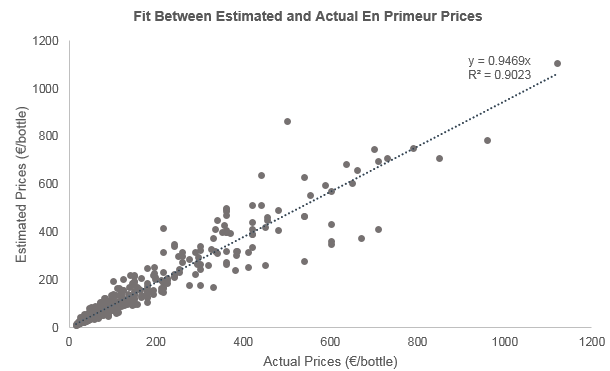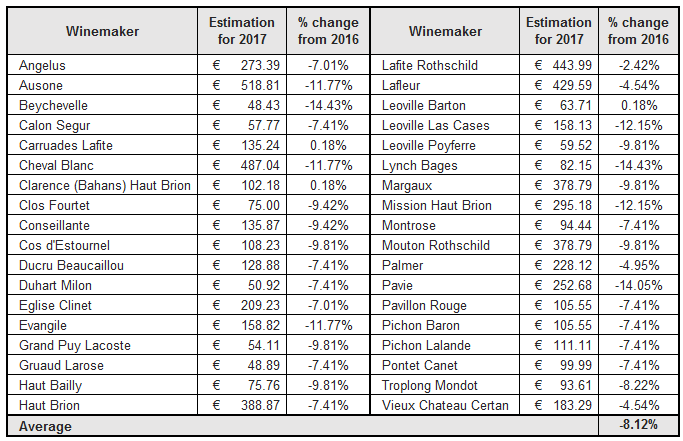What is a realistic en primeur price in a heterogeneous vintage? Professors M. Hakan Hekimoğlu and Burak Kazaz published an earlier report using weather and market fluctuations to estimate the en primeur prices prior to the release of the tasting expert reviews. The earlier report developed two estimates for First Growth and Left Bank winemakers: Their best fitting models estimated a slight price increase (2.02% and 1.47%, respectively), and their conservative model predicted a small price reduction (3.01% and 6.87%, respectively). In the post below, they reveal predictions made with critic scores now incorporated into the model.
Now that the barrel scores from tasting experts are revealed, we have developed a revised set of estimates that are highly robust. These new estimates are referred to as “realistic” en primeur prices. The model uses the changes in average of daily maximum temperatures, total precipitation, the Liv-ex 100 index as a market indicator, barrel scores, and the interaction between the temperatures and the market. The approach also unifies the estimation method between First Growth, Left Bank and Right Bank winemakers.
The figure below shows the impressive fit between the actual en primeur prices and the estimated prices from the model: It captures 95% of the slope in the y = x line with a 90% R2.

Figure 1. The fit between estimated and actual en primeur prices (€/bottle) for vintages between 2002 and 2016.
As is evident in the figure above, we are confident that this approach will guide winemakers in choosing a realistic release price that it is in line with their previous release prices. Incorporating tasting expert reviews leads to a further reduction in release prices: An average of 8.2% reduction for the 2017 vintage en primeur prices from the previous year.

Bios
- Hakan Hekimoğlu, Ph.D., is an Assistant Professor of Supply Chain Management at the Lally School of Management, Rensselaer Polytechnic Institute in the United States. His publication on wine analytics is considered to be highly influential by wine distributors and it is selected to be re-published in the INFORMS Editor’s Cut.
- Burak Kazaz, Ph.D., is the Steven R. Becker Professor of Supply Chain Management and the Laura J. and L. Douglas Meredith Professor of Teaching Excellence at the Whitman School of Management, Syracuse University in the United States. His articles won numerous best paper awards, and most recently, he is the recipient of the prestigious Wickham Skinner Prize.
Scores used for this analysis come from Vinous.com and Robertparker.com. We applied the same criteria for selecting scores as in our usual En Primeur analysis.





